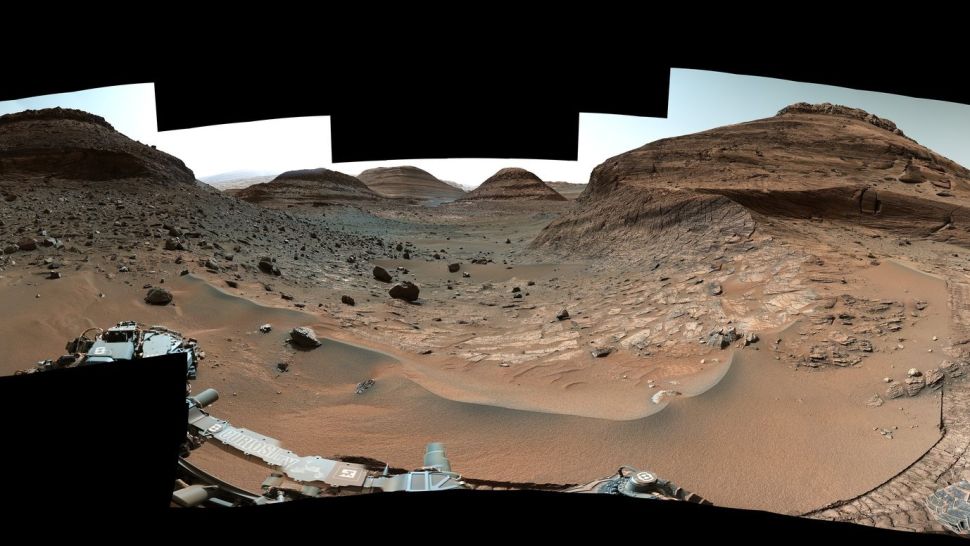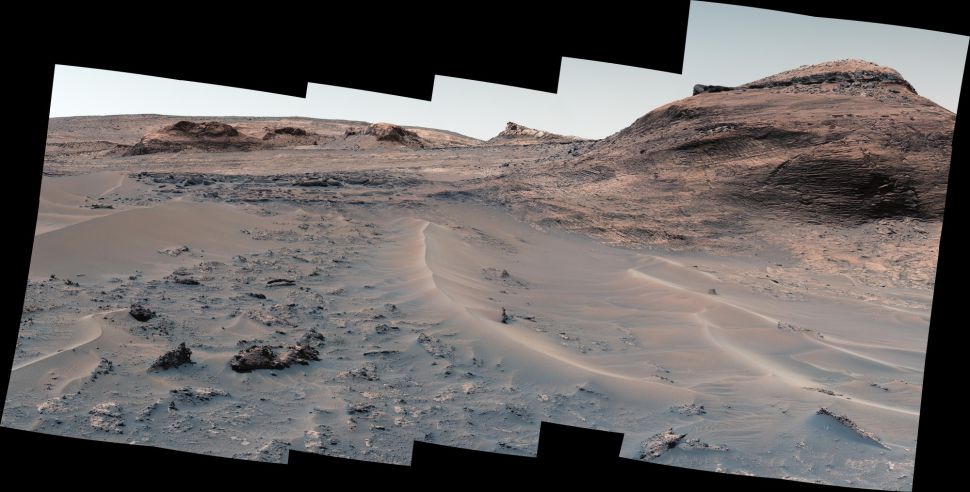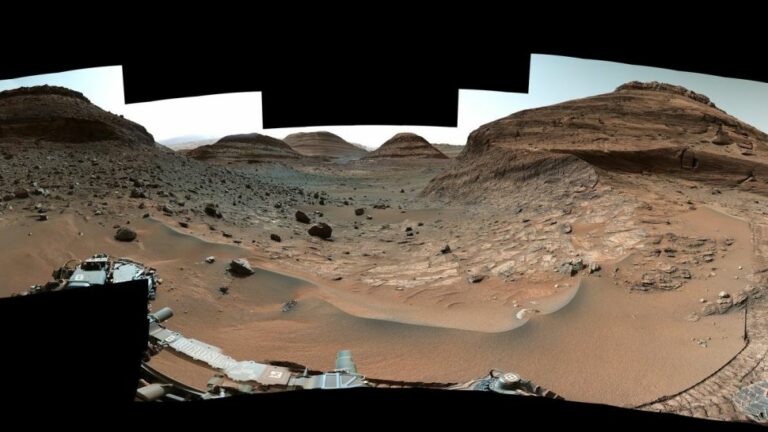NASA’s Mars rover Curiosity reaches intriguing salty site after treacherous journey
The NASA Curiosity Mars rover has arrived to a region that is considered to have created billions of years ago when the Red Planet’s water vanished after a perilous trek.
The Curiosity rover’s home territory on Mars, Mount Sharp, is rich in salty minerals that are thought to have been left behind after streams and ponds dried up. As a result, this area may provide intriguing hints about how the temperature on Mars evolved from being comparable to Earth’s to the frozen, desolate desert that Curiosity is currently exploring.

Years before Curiosity landed on Mars in 2012, NASA’s Mars Reconnaissance Orbiter discovered the salty minerals that enrich this region of Mount Sharp.
When Curiosity finally got a close-up look at Mount Sharp’s landscape, the rover found a wide variety of rock types and evidence of previous water, including popcorn-textured nodules and salty minerals like sodium chloride, which is the main component of regular table salt, and calcium sulfate (which includes gypsum).
The Curiosity crew chose a rock known as “Canaima” for the drilling and collecting of the mission’s 36th drill sample after taking into consideration strains on the rotary drill at the end of the rover’s 7-foot (2 meters) arm that pulverizes rock samples for examination.
According to Curiosity’s project manager Kathya Zamora-Garcia, “like we do before every drill, we wiped away the dust and then poked the top surface of Canaima with the drill.” The lack of scratch marks or indentations was a sign that drilling may be challenging.
The crew then came to a standstill to determine whether Curiosity’s arm was in danger from that. They chose to move on and found that there was no need for percussion since a new drilling algorithm had been developed to reduce the usage of percussion, which is a pounding motion utilized by drills to penetrate hard surfaces.
The team will now examine fragments of the Canaima sample using the Sample Analysis at Mars instrument and the Chemical and Mineralogy instrument on Curiosity.

Curiosity’s summer road trip
The Curiosity rover spent August traveling through a constrained, sand-lined section known as Paraitepuy Pass in order to reach the sulfate-rich area. Curiosity’s safe passage across this perilous terrain, which winds between tall hills, took more than a month. Although there aren’t many jagged rocks in Paraitepuy Pass that may cut the rover’s wheels, sand can still be dangerous for Curiosity because if its wheels lose traction, the rover could become trapped.
The hills around the rover prevented it from seeing the Martian sky, so Curiosity’s operators had to carefully place it so that its antennae pointed toward Earth and could maintain communication with Mars orbiters.
The crew was rewarded with some spectacular photographs from Curiosity’s Mastcam for meticulously following this path, in particular a panorama of the area taken on August 14.
Curiosity’s scientific operations coordinator, Elena Amador-French, who oversees coordination between the science and engineering teams, said in the release, “We would get fresh photographs every morning and simply be in wonder.” “The sand ridges were breathtaking. Perfect small rover tracks are visible on them. The cliffs were very stunning, and we were able to go quite close to them.”
Curiosity faces a difficult journey ahead despite passing via Paraitepuy Pass. The operations crew of the rover will need to take into consideration the rocky terrain that makes it more difficult to secure all six of Curiosity’s wheels on firm footing in this salty location.
Operators won’t risk deploying Curiosity’s drill-holding arm if it isn’t sturdy in case it collides with sharp rocks.
According to Amador-French, “Mars appears to throw more barriers at us as the research discoveries get more and more exciting.”
Curiosity will continue to investigate this region, demonstrating that the rover still has a lot of territory to cover after ten years on Mars.
Do not forget to share your opinion with us to provide you with the best posts !





0 Comments